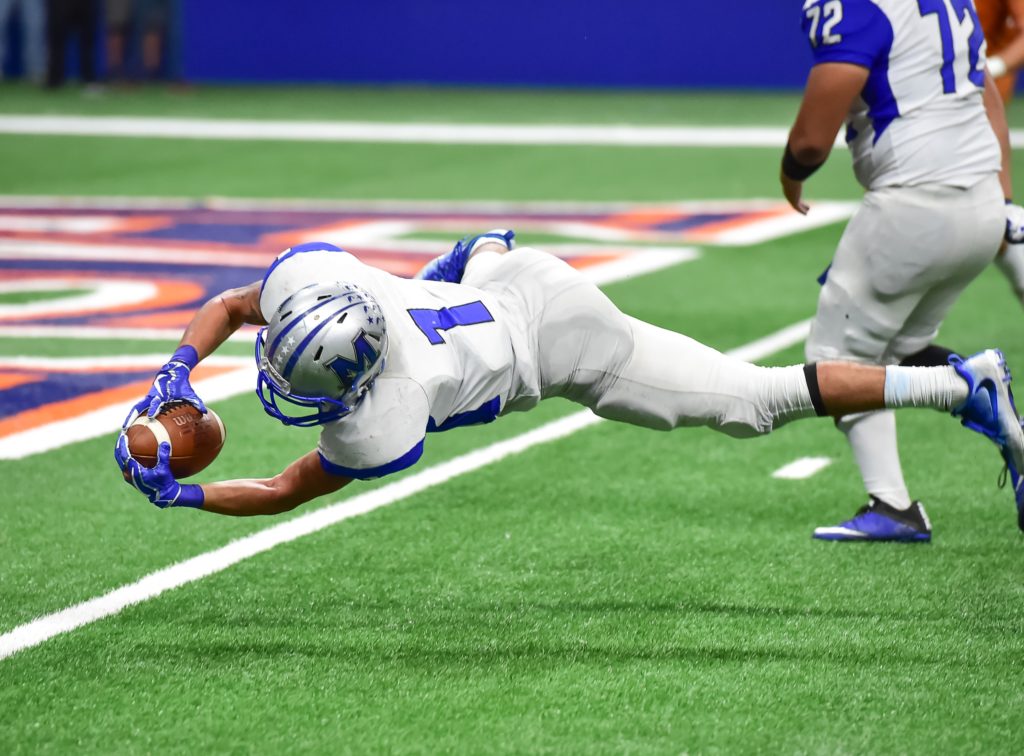
01 Aug Why DCs Shouldn’t Be Obsessed About “Alignment”
Why DCs Shouldn’t Be Obsessed About “Alignment” When Helping Their Football Athletes (And What They Should Be Focused on Instead)
By Christina DeBusk

On September 10, 2018 at 7:20 PM, the Los Angeles Rams are scheduled to kick off their first NFL season game. Their challengers? The Oakland Raiders.
While Northern and Southern California fans will undoubtedly be rooting for their favorite local teams that evening, one healthcare professional will be standing on the sidelines, making sure his players are healthy enough to stay in the game. That professional is Beau Daniels, DC.
Director of Integrated Sports Medicine at Sports Academy in Thousand Oaks, CA, Daniels is the official chiropractor for the Los Angeles Rams, a position he calls “just a piece of the puzzle” as it takes a host of trained staff to keep all of the players on the field, both in trainings and in games.
Yet, after working in sports medicine for over a decade now, Daniels says that one thing he sees many DCs do that may not be enabling them to serve their football patients as effectively as possibly is placing so much focus on their alignment. What’s the problem with this approach?
It’s Not About the “Alignment”
“I don’t like to use the word ‘aligned,’” says Daniels, “as this is rarely the case.” In fact, many athletes are not in perfect alignment or balance as symmetry is this rare, he says, largely because of the unique demands of their sport.
Still, Daniels says that he sees many DCs obsess about this, always striving to create just the right balance for their patients. The problem with this approach is, “if you just obsess about it, you may never get there,” says Daniels. “You may miss the big picture.” Instead, you want to prioritize properly and “treat according to the pain or known impairment.”
Knowing that there is a collaborative and comprehensive approach for each athlete, within the Rams organization, Daniels typically focuses on a combination of the three categories: movement efficiency, manual therapy, and joint mobilization.
#1: Movement Efficiency
“From a clinical and performance perspective, it is important for me to have an appreciation for movement efficiency,” says Daniels. “The goal of our treatment plan is to enhance this efficiency. In sport, this can be very hard to equalize, but it has to be a big component of the treatment plan.”
In his private clinic, one of the evaluation tools he employs is the SFMA to help identify discrepancies in the athlete’s movement patterns. SFMA stands for selective functional movement assessment and research has found that this particular assessment can potentially lead to improved function and reduced pain. For instance, one case report published in the International Journal of Sports Physical Therapy involved a male athlete with low back pain. After being evaluated with SFMA, a treatment plan was created and, upon discharge, the patient had increased joint mobility and experienced much lower levels of pain, dropping from a seven to a two on a 10-point scale.
Daniels shares that using SFMA gives him the opportunity “to look at how they move versus how they are in a static environment. In other words, the athlete exposes functional patterns that can be treated by mobility and flexibility work quickly and/or by identifying stability and strength deficits that are a more long-term fix. This approach crosses over to an athlete in their sport much more congruently than examining the athlete on the table.”
This is important because the physical demands of football show specific patterns of inefficiency through the hip complex. With that being said, Daniels spends time on the hips primarily before moving on to some of the other areas.
#2: Manual Therapy
The second way DCs can help their football athletes become better conditioned is by creating an athlete that is both flexible and strong; “Strengthen the muscles that are weak, lengthen the muscles that are tight,” says Daniels.
The type of manual therapy depends on the type of injury and number of injuries. There are usually multiple injuries with football players, Daniels says, and therefore prioritizing what you do is a necessary fact that has to be accurate.
Treatment should also depend on athlete position, he says, as you would treat a linebacker different than a quarterback, for instance. So, when thinking about how you spend your time with the athlete, “be very injury-specific, be very goal-specific, be very position-specific,” says Daniels.
#3: Joint Mobilization
Lastly, as a DC Daniels has a great appreciation for addressing the joint specifically. DCs can help their athletes by focusing on joint mobilization. “You always want to make sure it moves freely,” says Daniels, “with no limitation regarding the joint.”
Daniels shares that, in football, he spends a lot of time working on overuse injuries to the feet and ankle joints. Chronic conditions like tendinitis and/or tendinosis tend to be common in these areas because football players are athletes that can create an enormous amount of force and they put a lot of mileage on during training. Helping these athletes to deal with these demands of the game is one of the best fits for DCs in the NFL. Daniels also shares that mobilizing the hips and pelvis can help prevent many soft tissue injuries that tend to plague football players such as hip flexor, groin, and hamstring pulls.
Though research has found that knee injuries are extremely common in football, Daniels says he only works on a player’s knee if it’s an old chronic injury, or a repetitive trauma injury, because most major knee injuries require orthopedic care or physical therapy instead.
Don’t Forget About the Rehab
Daniels stresses that it’s also important to not forget about the rehab process as it is very important to strengthen weak muscles, something one of his patients learned firsthand.
Daniels had a collegiate baseball player who put on about 15-20 pounds of muscle in the offseason before his freshman year at a junior college. “During his freshman year, he was slotted to start and bat second when he developed lower back pain,” Daniels says. “He came to see me one weekend prior to season starting because it kept getting worse and he was concerned.”
The athlete’s exam pointed to a stress fracture in the lower back, so Daniels sent him for an MRI, which confirmed that there was a pars defect in the L5 vertebrae that was pretty significant. The player was forced to back out of the season and was medically red-shirted.
“What this player had done was put on muscle which gave him great strength to explode through the ball and really increased his hitting potential; however, the way he trained negated the ability to work on stabilizing and supporting that increased force on the body,” says Daniels. “This lead to the body failing and this type of injury.”
Daniels goal was to rehab the player the right way, making him stronger, more stable, and more functional. “I worked with him during the season, through the summer, and all the way through the time when offseason began the following year,” says Daniels.
And it paid off because, when the player returned, he was in the best shape of his life. “He played that offseason, batted third in the lineup all season long, and was drafted after that season into the league,” Daniels says, adding “he is currently in the minors working hard to get to the bigs.”
DoCS is committed to raising the bar in chiropractic for athletes, so if you have any questions or article ideas, please feel free to contact us or share them in the comment section below. Reprints of this article permitted as long as it links back to the DoCS website: www.DoC-Sports.com.


Sorry, the comment form is closed at this time.